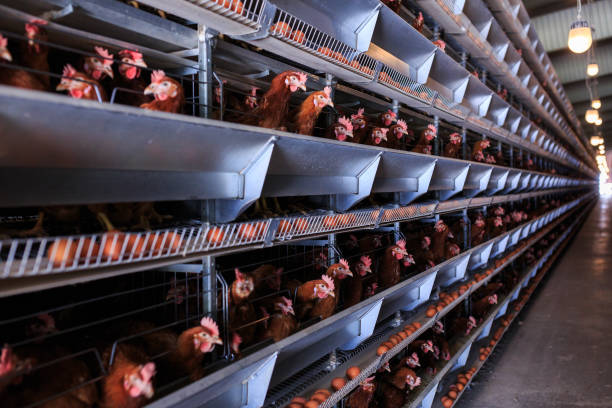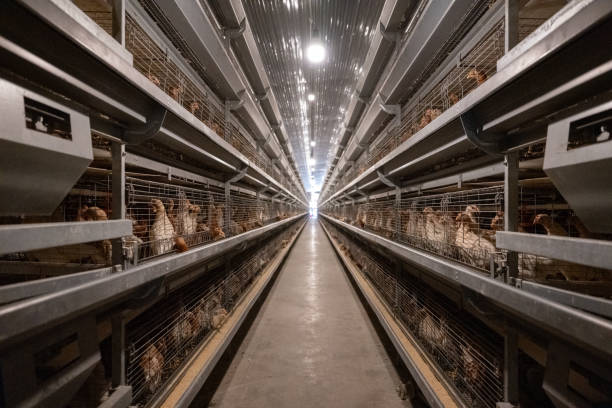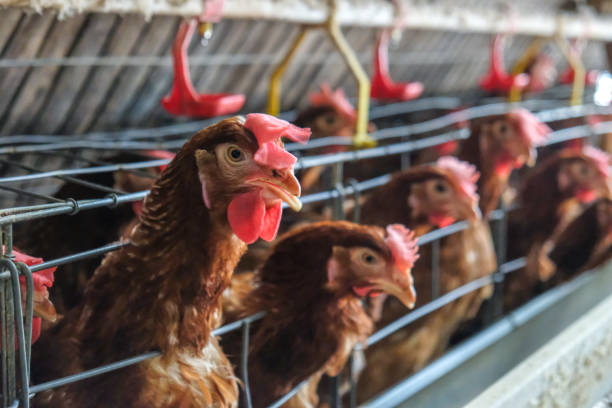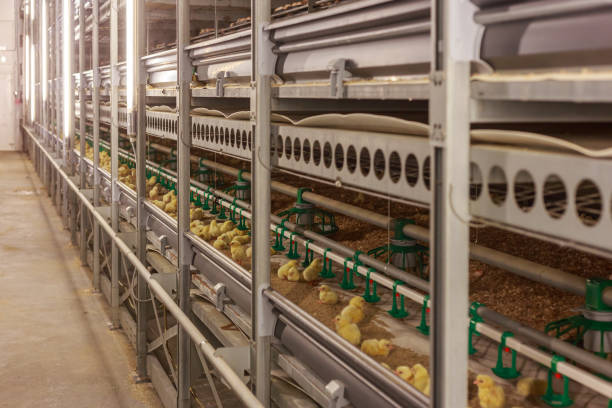
Uganda Chicken Farm Data Management Plan: Maximize Efficiency & Profits
Uganda Chicken Farm Data Management Plan: Maximize Efficiency & Profits
In the competitive world of poultry farming in Uganda, leveraging data effectively can be the key to unlocking maximum efficiency and profitability. A well-structured data management plan allows farmers to move beyond guesswork and make informed decisions based on real-time insights. This article will delve into the essential elements of a comprehensive data management plan tailored for Ugandan chicken farms, covering everything from data collection and storage to analysis and application.
### Understanding the Importance of Data Management
Before diving into the specifics, it’s crucial to understand why data management is so vital for modern chicken farming. Traditionally, farmers relied on experience and intuition. While this knowledge is valuable, it can be subjective and prone to errors. Data-driven decisions, on the other hand, are objective and based on concrete evidence.
Here’s how data management can benefit your Ugandan chicken farm:
* **Improved Production Efficiency:** By tracking key metrics like feed consumption, egg production, and mortality rates, you can identify areas where improvements can be made. For example, if your chickens are consuming more feed than expected but producing fewer eggs, it could indicate a problem with feed quality, disease, or environmental conditions.
* **Reduced Costs:** Data analysis can help you optimize resource allocation. By monitoring feed usage, water consumption, and energy expenditure, you can identify and eliminate waste, thereby reducing your operational costs.
* **Enhanced Disease Management:** Early detection of disease outbreaks is crucial to minimizing losses. By monitoring key health indicators like body weight, behavior, and mortality rates, you can identify potential problems early on and take timely action.
* **Better Decision Making:** Data provides a clear picture of your farm’s performance, allowing you to make informed decisions about everything from breed selection and feed formulation to vaccination schedules and marketing strategies.

* **Increased Profitability:** Ultimately, effective data management leads to increased profitability by optimizing production, reducing costs, and minimizing losses.
### Key Components of a Chicken Farm Data Management Plan
A successful data management plan for your Ugandan chicken farm should encompass the following key components:
1. **Data Collection:** This involves identifying the relevant data points to track, establishing collection methods, and ensuring data accuracy.
2. **Data Storage:** This includes choosing appropriate storage methods, whether manual or digital, and ensuring data security and accessibility.
3. **Data Analysis:** This involves using analytical tools and techniques to extract meaningful insights from the collected data.
4. **Data Application:** This is the most crucial step, where insights derived from data analysis are used to make informed decisions and improve farm management practices.

### Data Collection: Identifying Key Metrics
The first step in creating a data management plan is to identify the key metrics that will provide valuable insights into your farm’s performance. The specific metrics you choose will depend on your goals and the type of chicken farm you operate (e.g., egg-laying or broiler production). However, some essential metrics to consider include:
* **Egg Production:** This is crucial for egg-laying farms. Track the number of eggs produced per hen per day, week, or month. Also, monitor egg quality attributes like size, shell strength, and yolk color.
* **Feed Consumption:** Monitor the amount of feed consumed by your birds on a daily, weekly, or monthly basis. This will help you assess feed conversion efficiency and identify potential feeding problems.
* **Water Consumption:** Tracking water consumption is important for assessing bird health and hydration levels. Reduced water intake can be an early sign of illness.
* **Mortality Rates:** Monitoring mortality rates is essential for identifying disease outbreaks and assessing the overall health of your flock. Track the number of birds that die each day or week, and investigate the causes of death.
* **Body Weight:** For broiler farms, body weight is a critical metric. Regularly weigh a sample of your birds to monitor their growth rate and ensure they are reaching target weights at the expected time.
* **Feed Conversion Ratio (FCR):** FCR is a measure of how efficiently your birds are converting feed into body weight (broilers) or eggs (layers). A lower FCR indicates better efficiency.
* **Environmental Conditions:** Monitor temperature, humidity, and ventilation levels within your chicken house. These factors can significantly impact bird health and productivity.
* **Vaccination and Medication Records:** Maintain accurate records of all vaccinations and medications administered to your birds. This will help you track the effectiveness of your health program and ensure compliance with regulations.
* **Sales and Revenue:** Track your sales of eggs or meat, as well as any other revenue generated from your farm. This will help you assess your farm’s profitability and identify opportunities for growth.
### Data Collection Methods: Choosing the Right Tools
Once you have identified the key metrics to track, you need to establish reliable methods for collecting data. Consider the following options:
* **Manual Record Keeping:** This involves recording data manually in notebooks or spreadsheets. While this method is inexpensive and doesn’t require any special equipment, it can be time-consuming and prone to errors. It is suitable for small-scale farms with limited resources.
* **Spreadsheet Software:** Programs like Microsoft Excel or Google Sheets can be used to create customized data entry forms and track key metrics. This method is more efficient than manual record keeping and allows for basic data analysis.
* **Poultry Farm Management Software:** Several software applications are specifically designed for managing poultry farms. These programs can automate data collection, analysis, and reporting, providing valuable insights into your farm’s performance. While they require an initial investment, they can save you significant time and effort in the long run.
* **Sensors and Automated Systems:** For larger, more sophisticated farms, sensors can be used to automatically collect data on environmental conditions, feed consumption, and water consumption. These systems can provide real-time data and reduce the need for manual monitoring.
* **Internet of Things (IoT) Devices**: These are more efficient technologies which can automatically monitor environmental variables such as temperature, humidity, ammonia concentration, etc. They can also automate feeding and drinking systems.
Regardless of the method you choose, it’s crucial to ensure that data is collected accurately and consistently. Train your staff on proper data collection procedures and regularly audit your records to identify and correct any errors.
### Data Storage: Ensuring Security and Accessibility
Once you have collected your data, you need to store it securely and in a way that makes it easily accessible for analysis. Consider the following storage options:
* **Physical Storage:** This involves storing data in physical form, such as paper records or filing cabinets. While this method is simple and inexpensive, it can be vulnerable to damage, loss, and theft. It is also difficult to analyze data stored in physical form.
* **Local Storage:** This involves storing data on a computer hard drive or external storage device. This method is more secure than physical storage and allows for easier data analysis. However, it is still vulnerable to hardware failure and data loss.
* **Cloud Storage:** This involves storing data on a remote server maintained by a third-party provider. Cloud storage offers several advantages, including increased security, accessibility from anywhere with an internet connection, and automatic data backups. However, it requires a reliable internet connection and may involve subscription fees.
Regardless of the storage method you choose, it’s crucial to implement appropriate security measures to protect your data from unauthorized access and loss. This may include password protection, encryption, and regular data backups.
### Data Analysis: Extracting Meaningful Insights
Once you have collected and stored your data, the next step is to analyze it to extract meaningful insights. This involves using analytical tools and techniques to identify trends, patterns, and anomalies in your data.
Here are some common data analysis techniques that can be applied to chicken farm data:

* **Descriptive Statistics:** This involves calculating summary statistics such as averages, medians, and standard deviations to describe the characteristics of your data. For example, you can calculate the average egg production per hen per day or the average daily weight gain for your broilers.
* **Trend Analysis:** This involves identifying trends in your data over time. For example, you can track egg production over several months to see if there are any seasonal patterns or identify a decline in egg production that could indicate a problem.
* **Correlation Analysis:** This involves determining the relationship between two or more variables. For example, you can analyze the correlation between feed consumption and egg production to see if there is a direct relationship between the two.
* **Regression Analysis:** This involves using statistical models to predict future outcomes based on historical data. For example, you can use regression analysis to predict the expected egg production based on current feed consumption and environmental conditions.
* **Benchmarking:** This involves comparing your farm’s performance to industry benchmarks or the performance of other farms. This can help you identify areas where you are falling behind and need to improve.
You can use spreadsheet software, statistical software packages, or poultry farm management software to perform these analyses.
### Data Application: Making Informed Decisions
The ultimate goal of data management is to use the insights derived from data analysis to make informed decisions and improve farm management practices. Here are some examples of how you can apply data insights to your Ugandan chicken farm:
* **Feed Optimization:** By analyzing feed consumption data and egg production data, you can optimize your feed formulation to ensure that your birds are getting the nutrients they need to maximize production without wasting feed.
* **Disease Prevention:** By monitoring mortality rates, body weight, and other health indicators, you can identify potential disease outbreaks early on and take timely action to prevent the spread of disease.
* **Environmental Control:** By monitoring temperature, humidity, and ventilation levels, you can adjust your environmental control systems to create optimal conditions for your birds, maximizing their health and productivity.
* **Breed Selection:** By tracking the performance of different breeds of chickens, you can identify the breeds that are best suited for your farm’s conditions and your production goals.
* **Marketing Strategies:** By analyzing sales data, you can identify your most profitable customers and products and tailor your marketing strategies to maximize your revenue.
### Challenges and Solutions for Data Management in Uganda
While data management offers significant benefits for Ugandan chicken farms, there are also some challenges to overcome. These include:
* **Lack of Access to Technology:** Many Ugandan farmers lack access to the technology and infrastructure needed to collect, store, and analyze data effectively. **Solution:** Focus on affordable and accessible technology solutions, such as smartphone-based data collection apps and cloud-based storage options.
* **Limited Training and Expertise:** Many farmers lack the training and expertise needed to use data management tools and techniques effectively. **Solution:** Provide training programs and workshops for farmers on data management best practices. Partner with agricultural extension officers to provide ongoing support and guidance.
* **Data Security and Privacy Concerns:** Farmers may be hesitant to share their data due to concerns about security and privacy. **Solution:** Implement robust data security measures and clearly communicate your data privacy policies to farmers.
* **Internet Connectivity Issues:** Reliable internet connectivity is essential for accessing cloud-based data storage and analysis tools. **Solution:** Advocate for improved internet infrastructure in rural areas and explore offline data collection options.
By addressing these challenges, Ugandan chicken farmers can unlock the full potential of data management and transform their operations into more efficient and profitable enterprises.
In conclusion, a data management plan is not just a luxury; it’s a necessity for modern chicken farms in Uganda looking to thrive in a competitive environment. By implementing the strategies outlined in this article, you can harness the power of data to optimize your operations, reduce costs, and maximize your profits. Start small, be consistent, and continuously refine your data management practices to achieve long-term success in the poultry industry.
